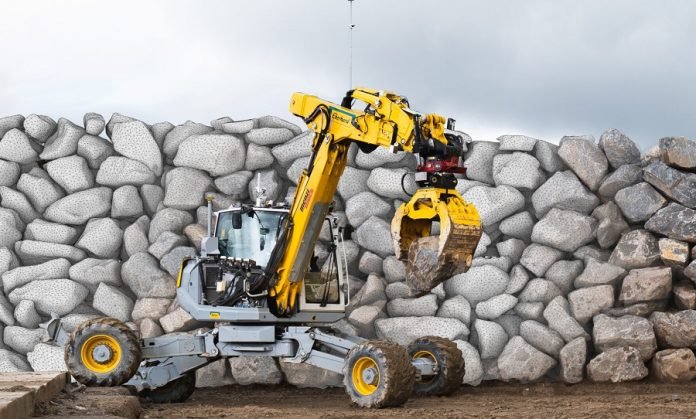
At ETH Zurich, a group of researchers has achieved a remarkable feat in construction and robotics.
They have successfully deployed an autonomous excavator, named HEAP, to construct a towering 6-meter-high and 65-meter-long dry-stone wall, showcasing the future of building in a digitally-driven world.
The Autonomous Construction Marvel: HEAP
HEAP is not your ordinary excavator.
This advanced robot was developed by a team from different research groups at ETH Zurich, including Gramazio Kohler Research, the Robotics Systems Lab, Vision for Robotics Lab, and the Chair of Landscape Architecture.
Their work is part of the National Center of Competence in Research for Digital Fabrication (NCCR dfab) and has been highlighted in the journal Science Robotics.
The Wall: A Blend of Tradition and Technology
The dry-stone wall built by HEAP is not just any wall.
It’s a combination of traditional building techniques and cutting-edge technology, situated in a park that was both planned digitally and shaped by the autonomous machine.
This wall, embedded in the landscape, showcases how robots can work in harmony with natural environments.
How Does HEAP Work?
HEAP is equipped with a range of sensors that allow it to understand and interact with its surroundings.
It starts by creating a 3D map of the construction site, which helps it locate and identify the building materials – in this case, large stones needed for the wall.
The excavator uses specially designed tools and machine vision technology to scan and pick up these stones, even figuring out their weight and center of gravity.
Building the Wall, Stone by Stone
Once HEAP has all the necessary data, an algorithm kicks in to determine the best position for each stone in the wall.
This is where HEAP’s autonomy shines. It carefully places each stone in the exact location specified by the algorithm, conducting the task with precision. In one go, HEAP can place about 20 to 30 stones – roughly the amount provided in a single delivery of materials.
The Future of Construction
This project at ETH Zurich is more than just about building a wall. It’s a glimpse into the future of construction where robots could take on complex, labor-intensive tasks with efficiency and precision.
By combining traditional construction methods with autonomous technology, projects like HEAP open the door to new possibilities in building and landscape design.
In summary, ETH Zurich’s autonomous excavator HEAP demonstrates the incredible potential of robotics in the construction industry.
Its ability to autonomously build a large-scale dry-stone wall is a significant step forward in digital fabrication and could pave the way for more innovative, efficient, and sustainable construction methods in the future.



